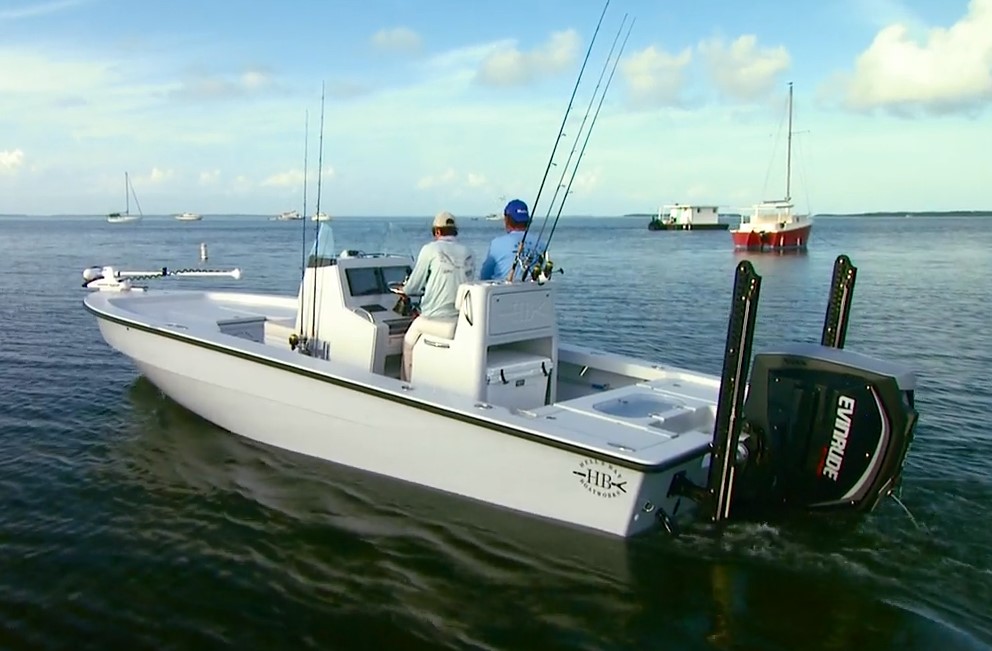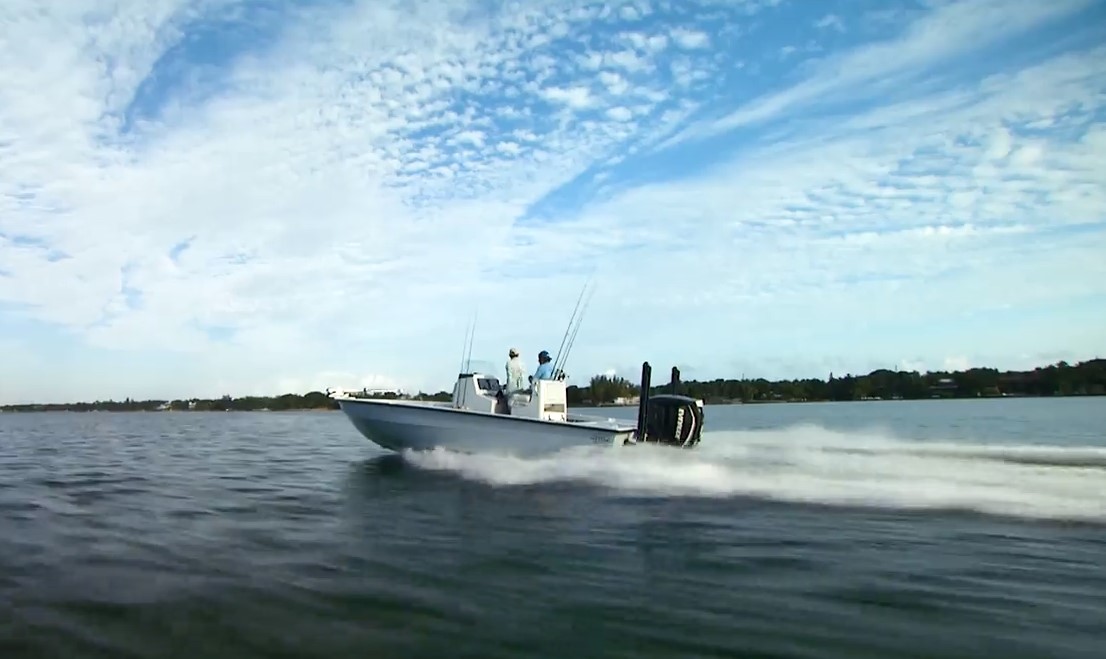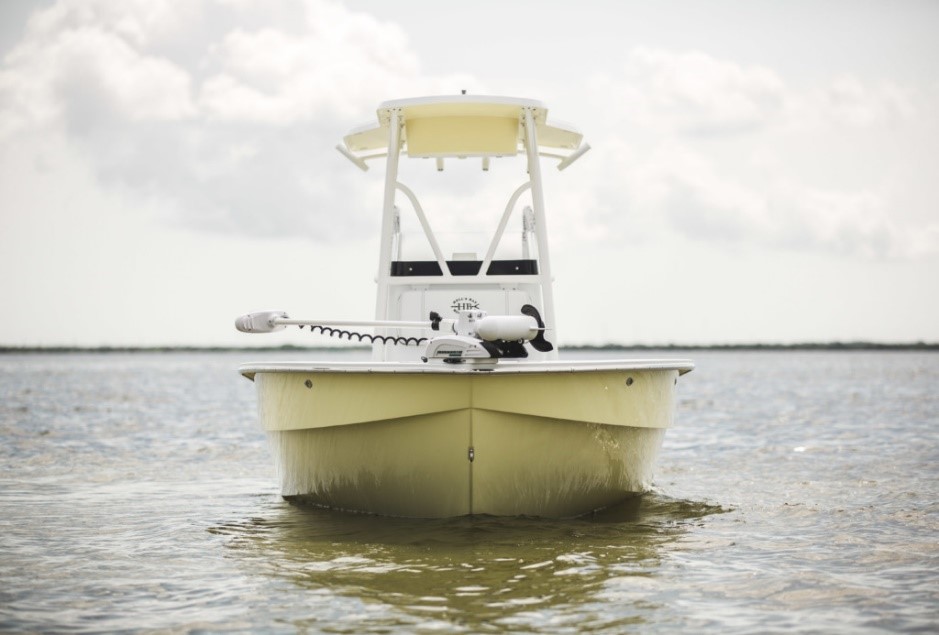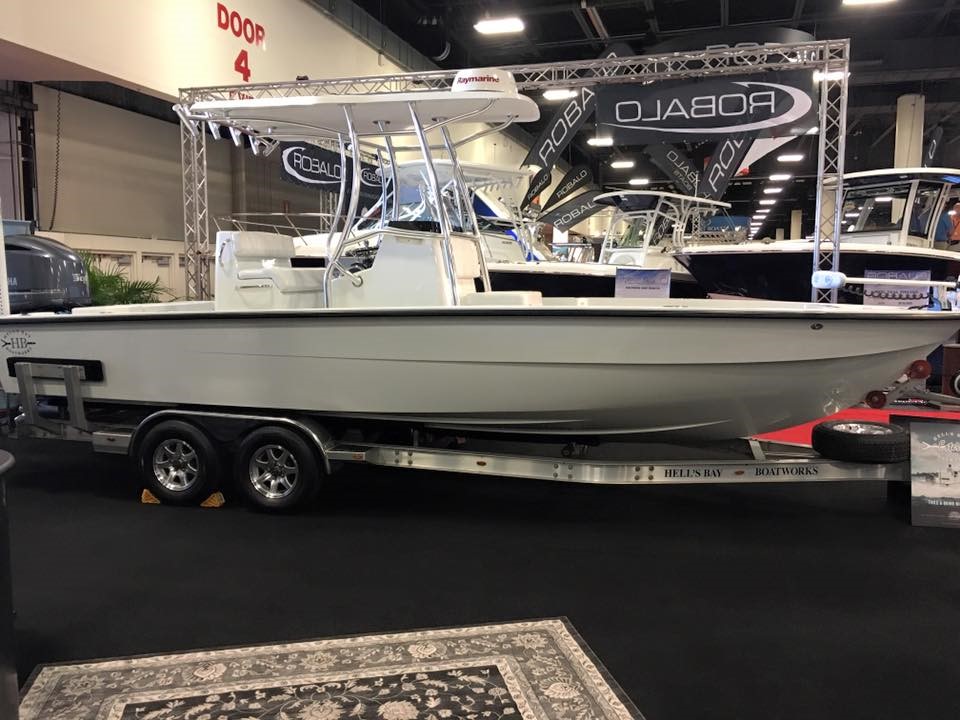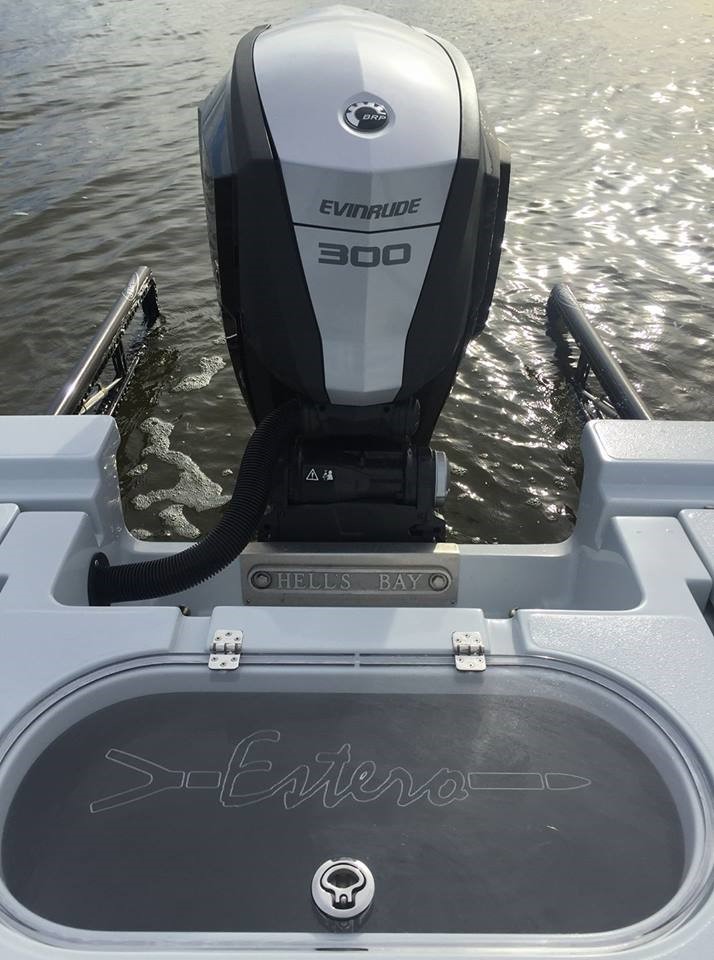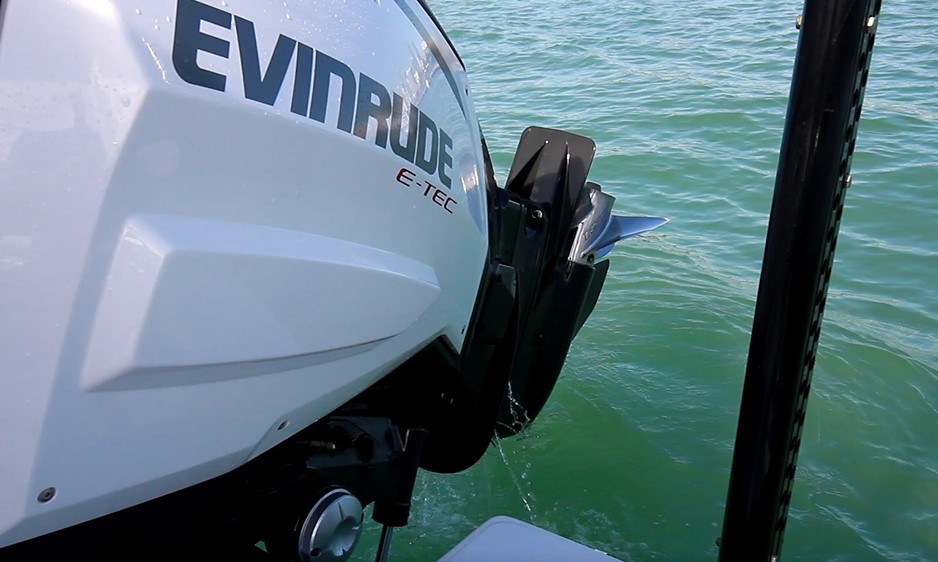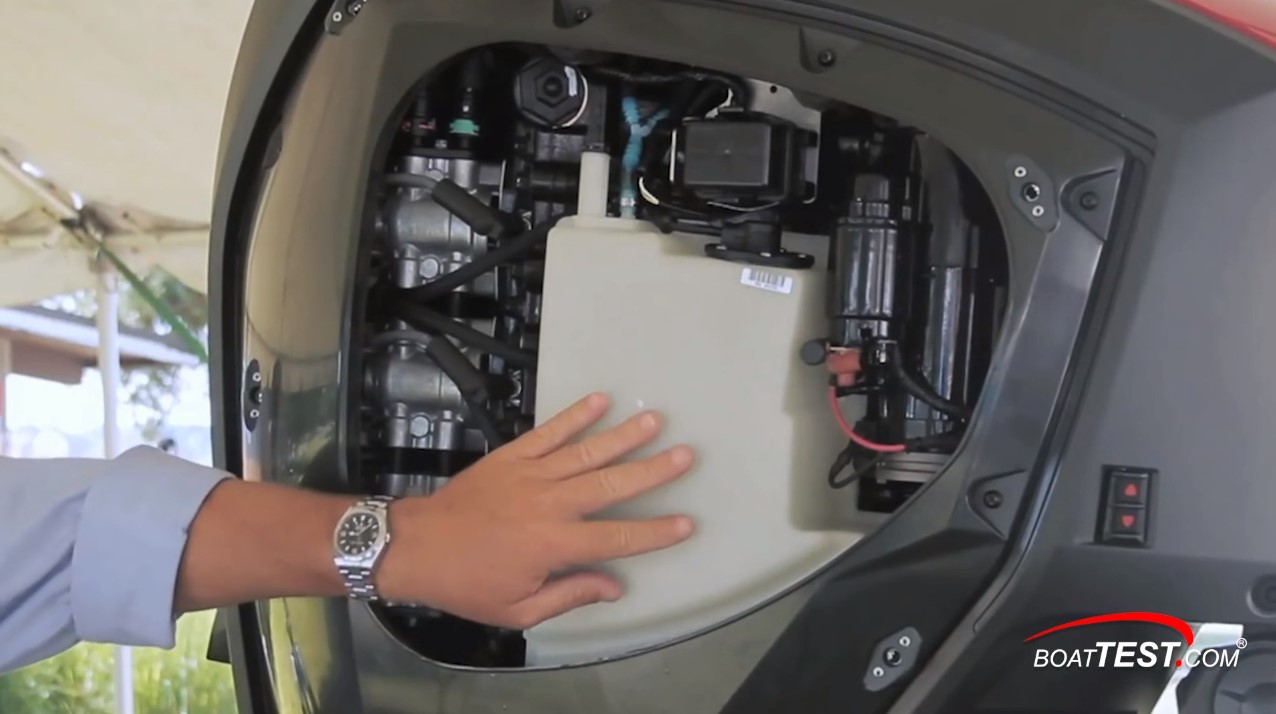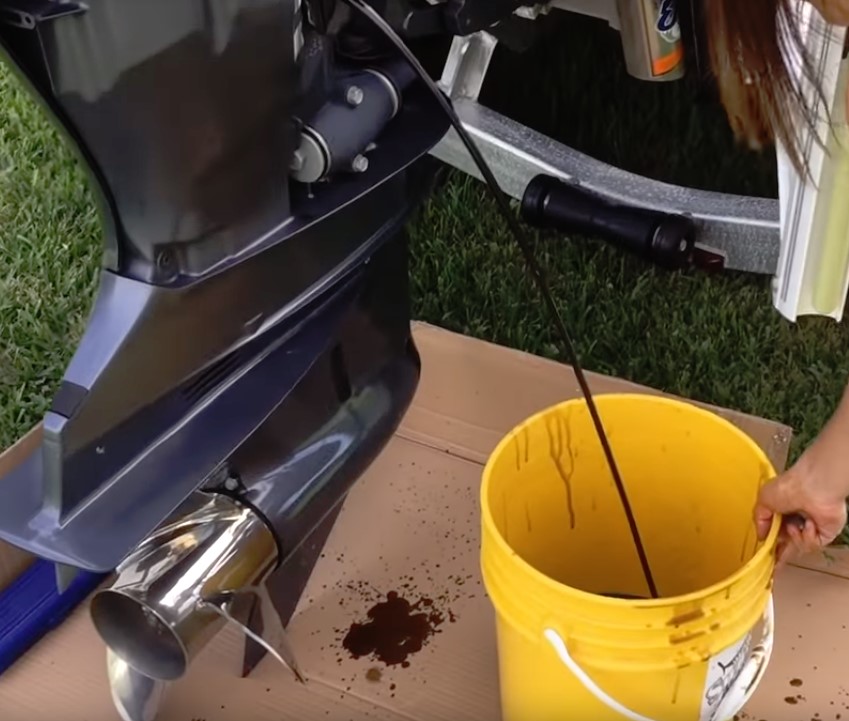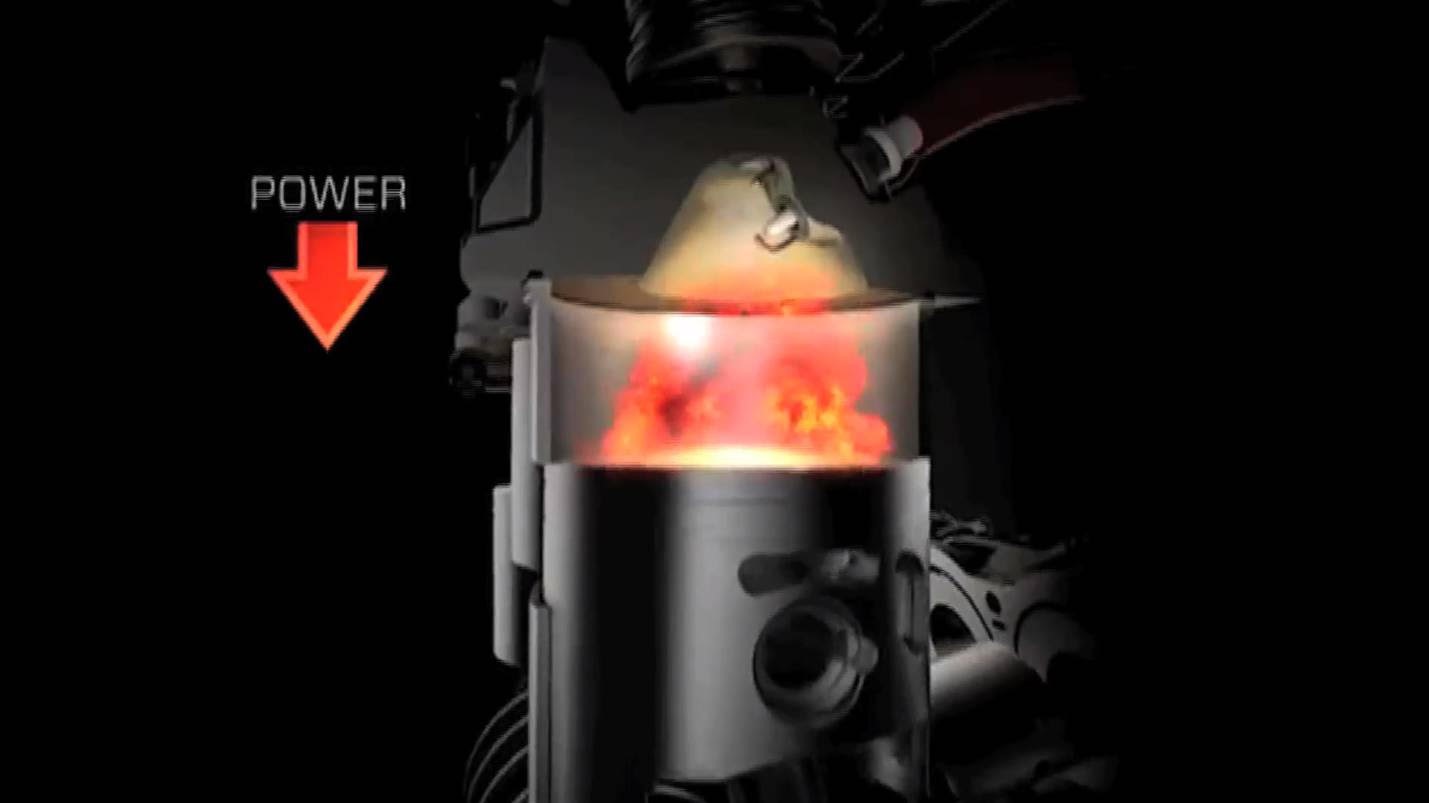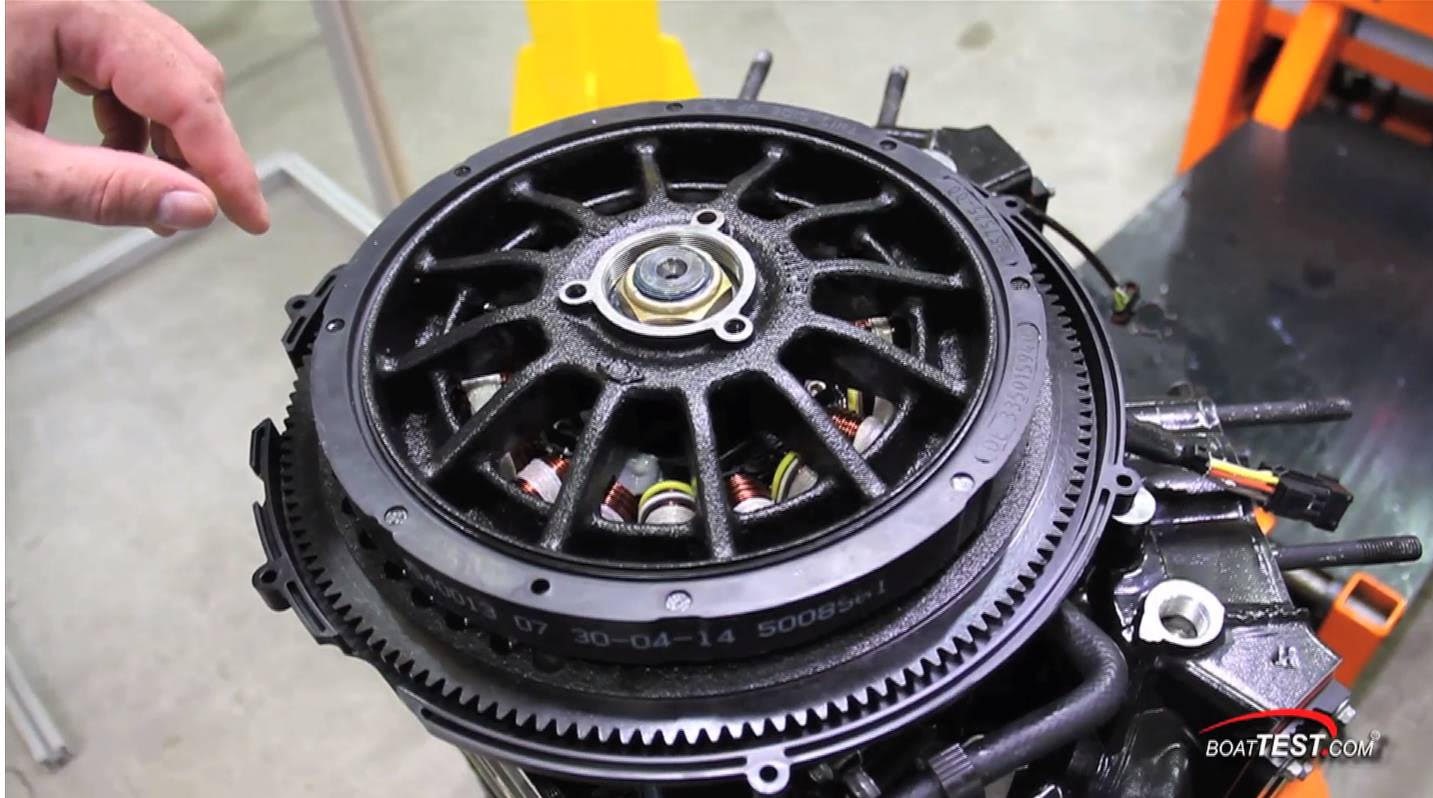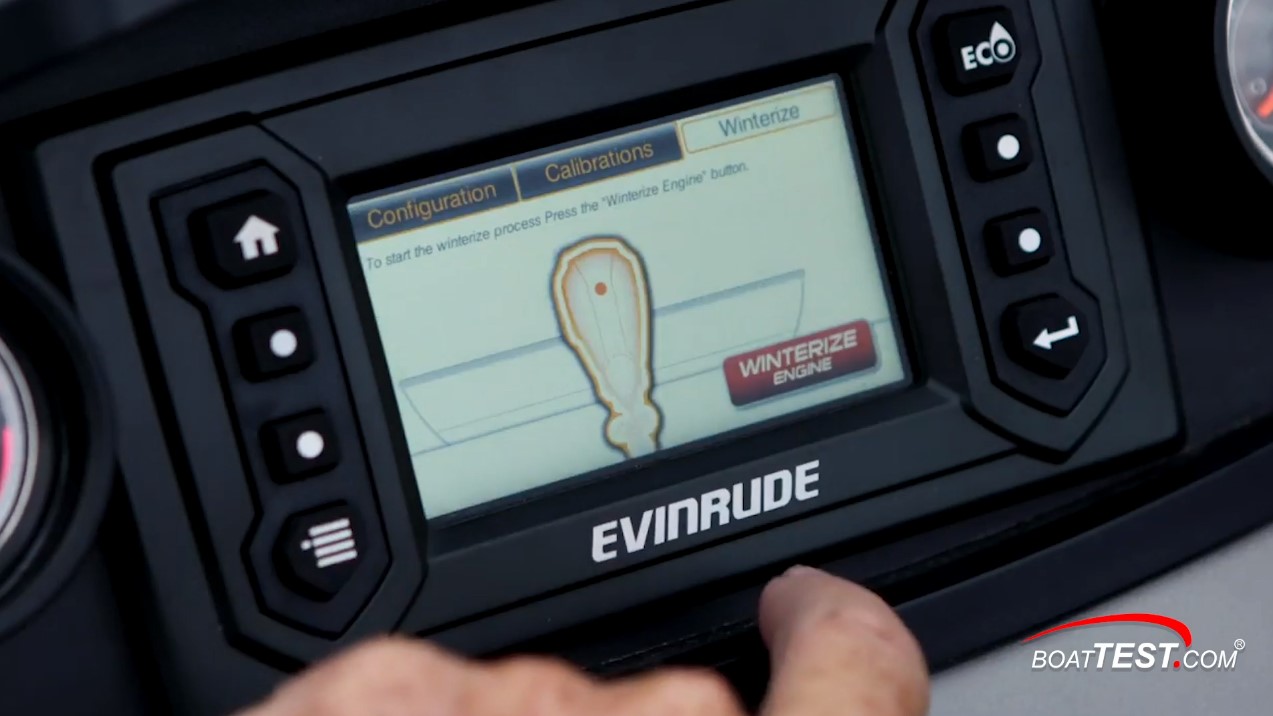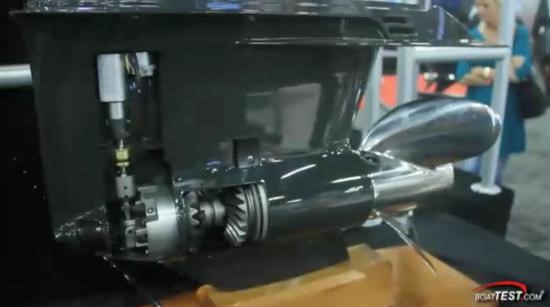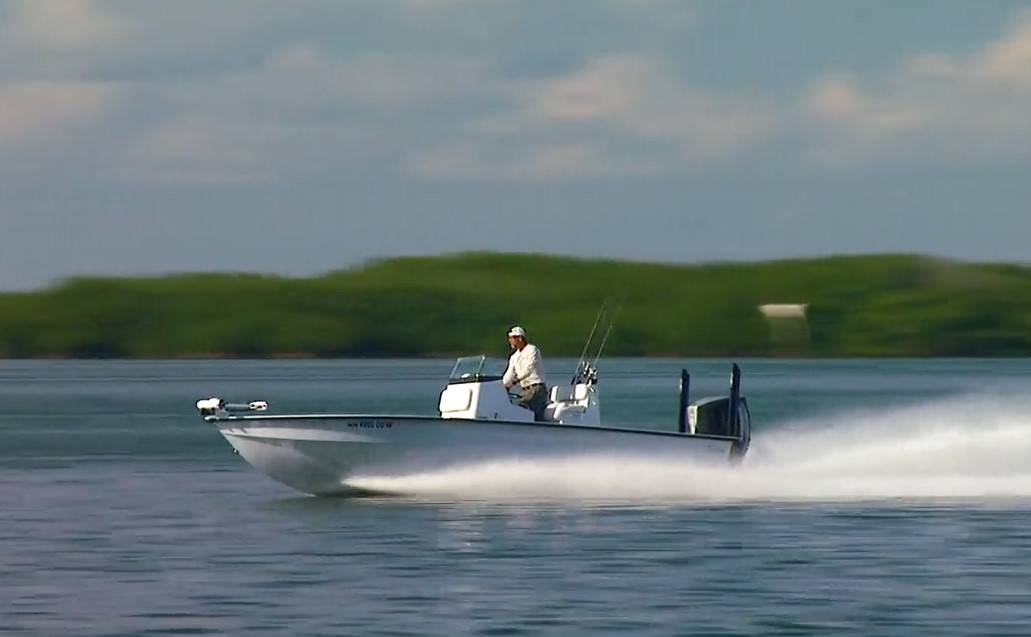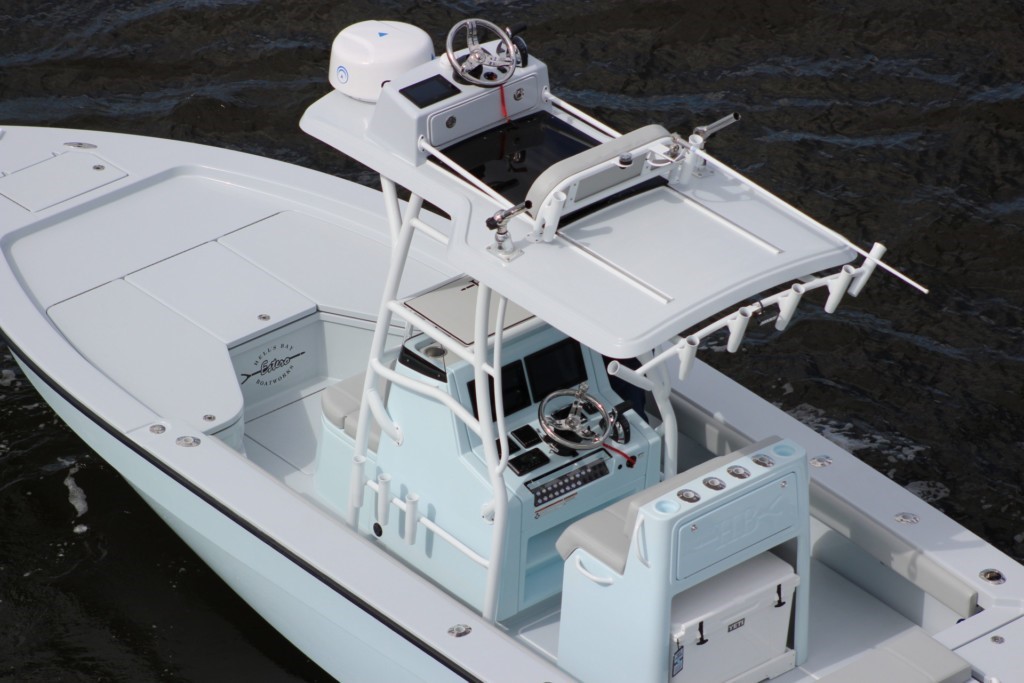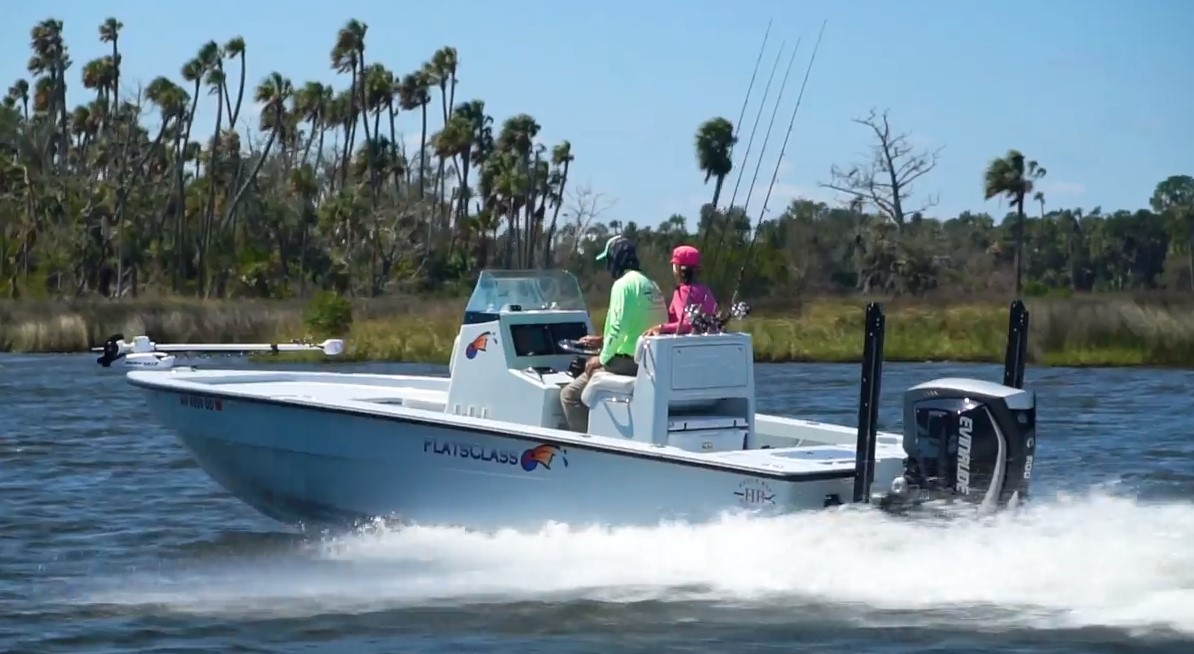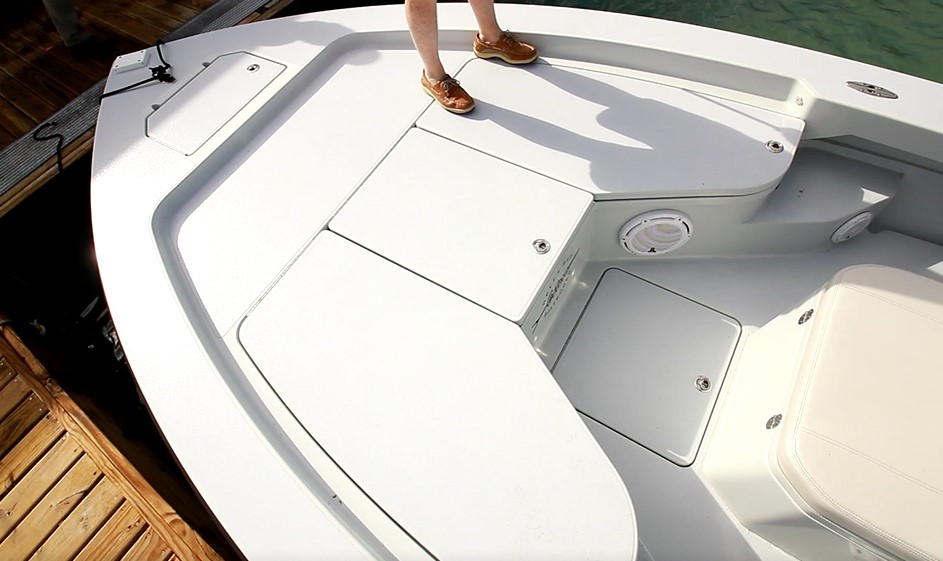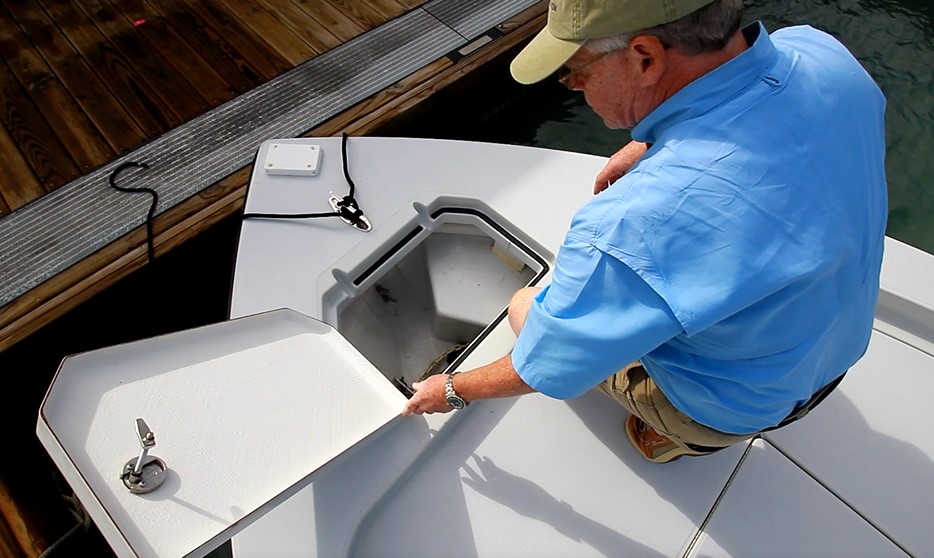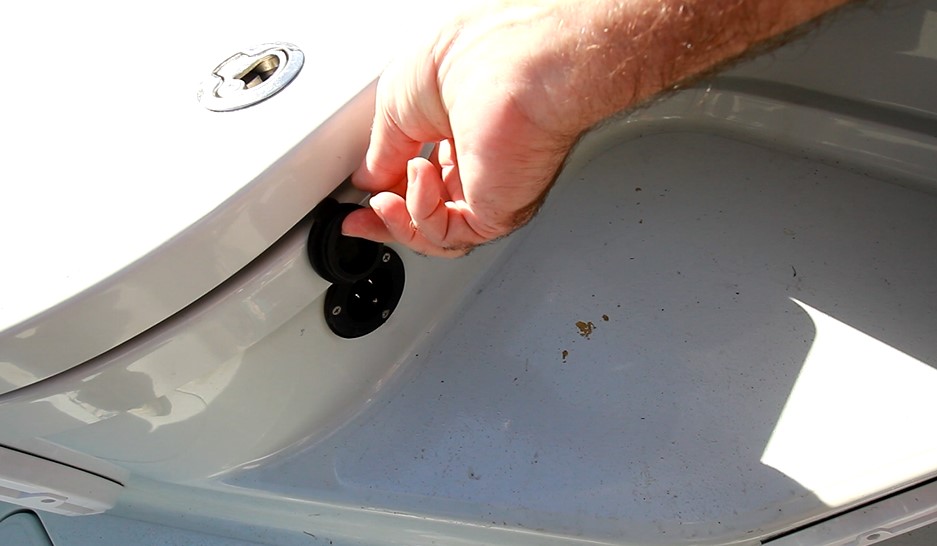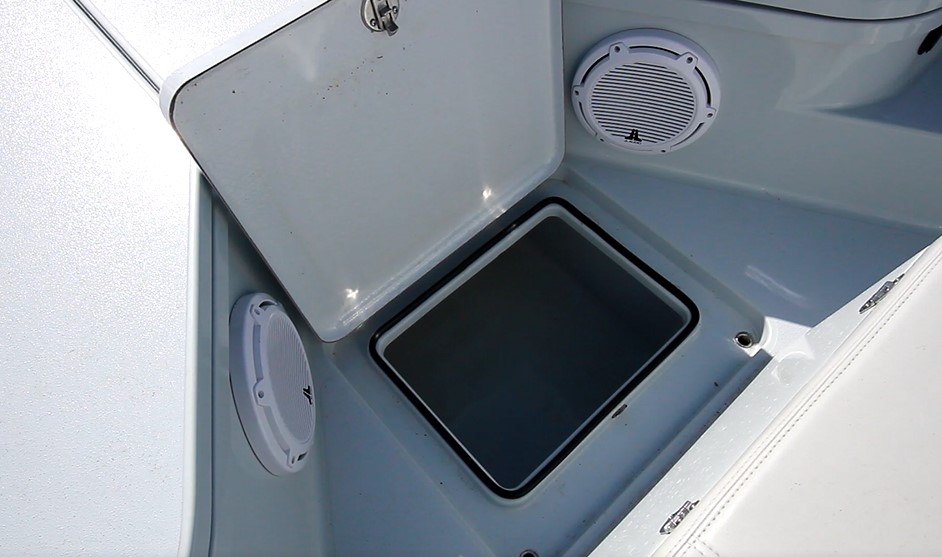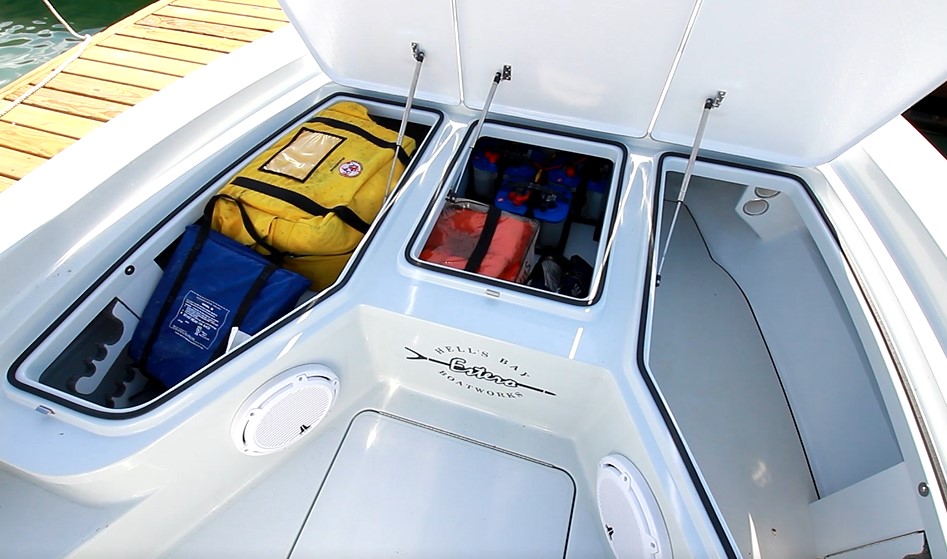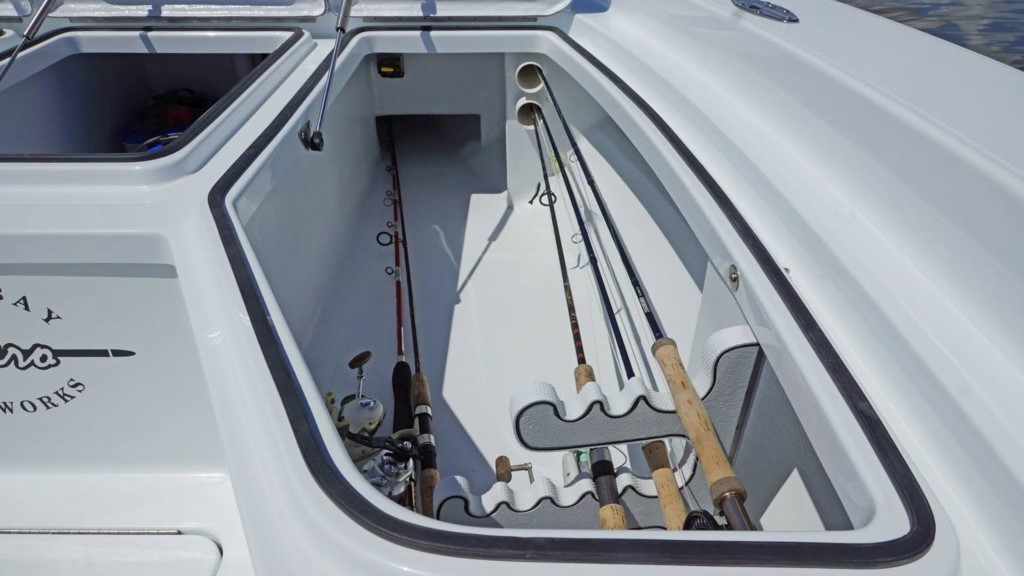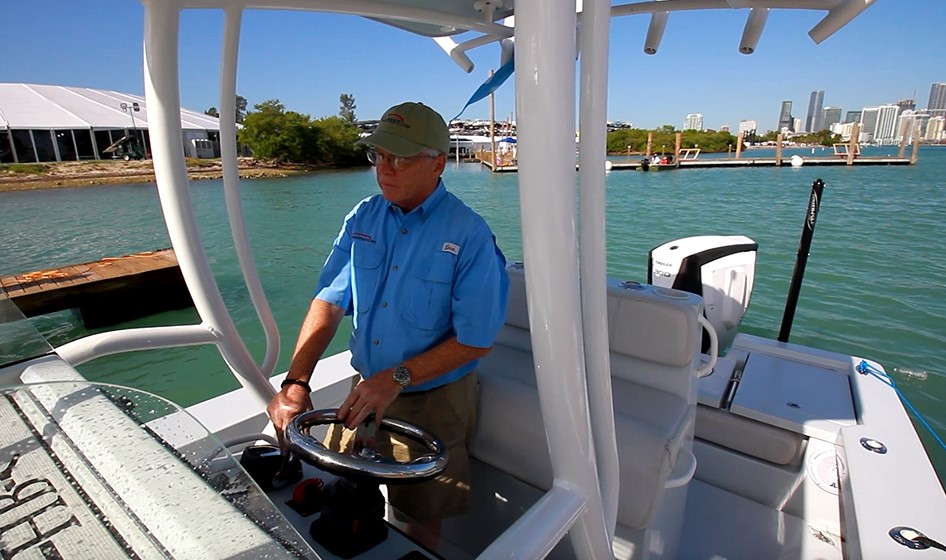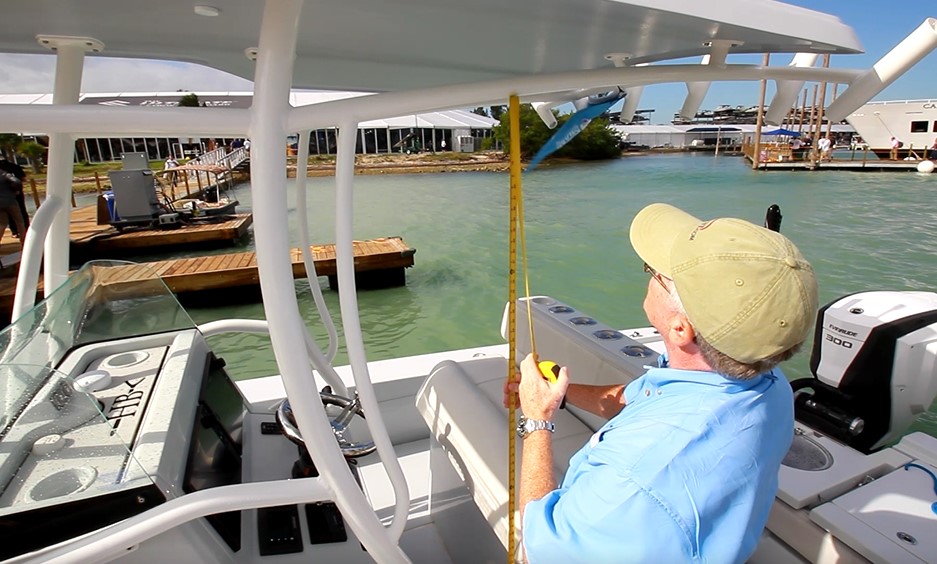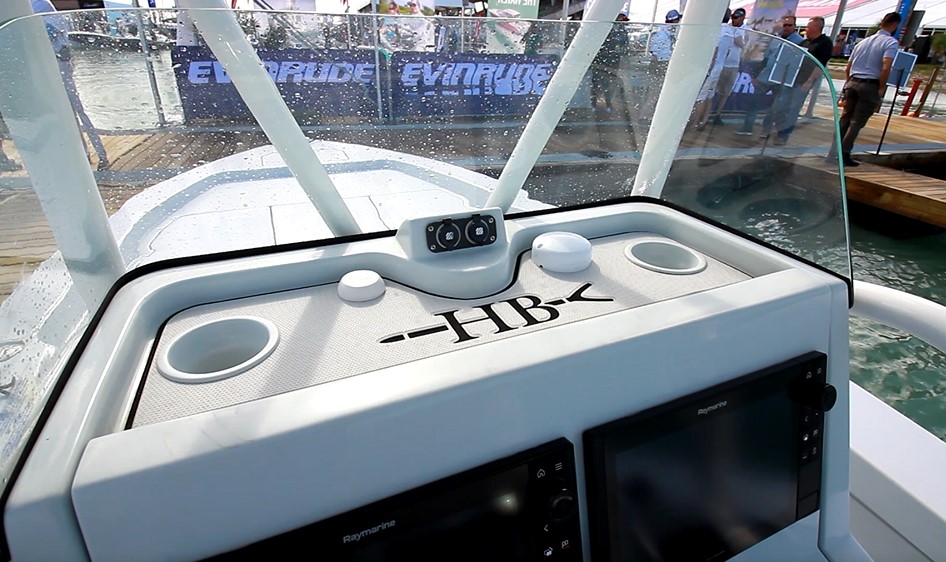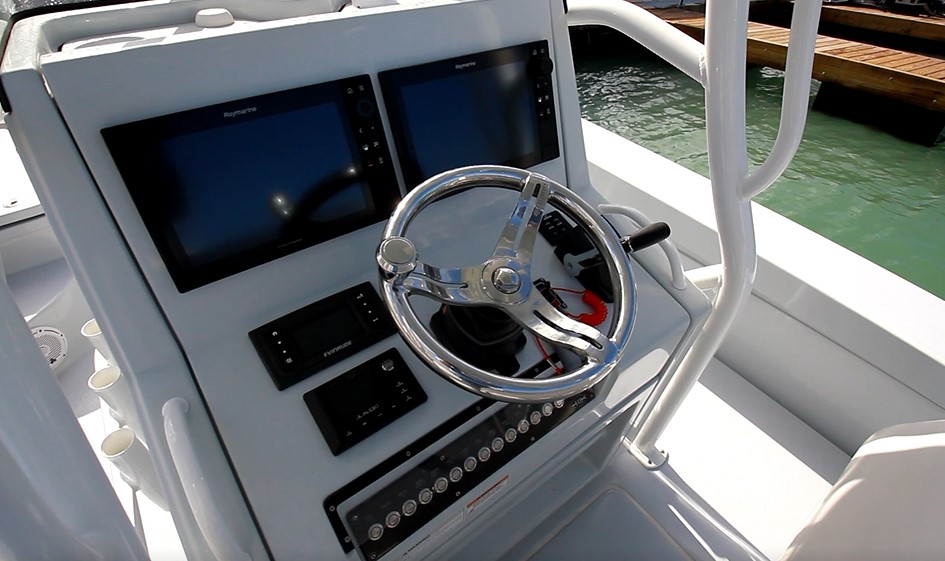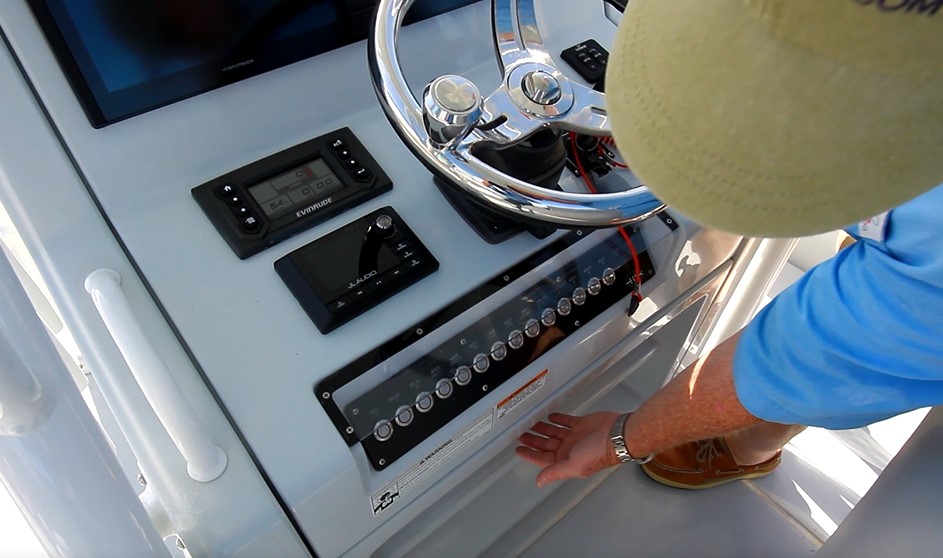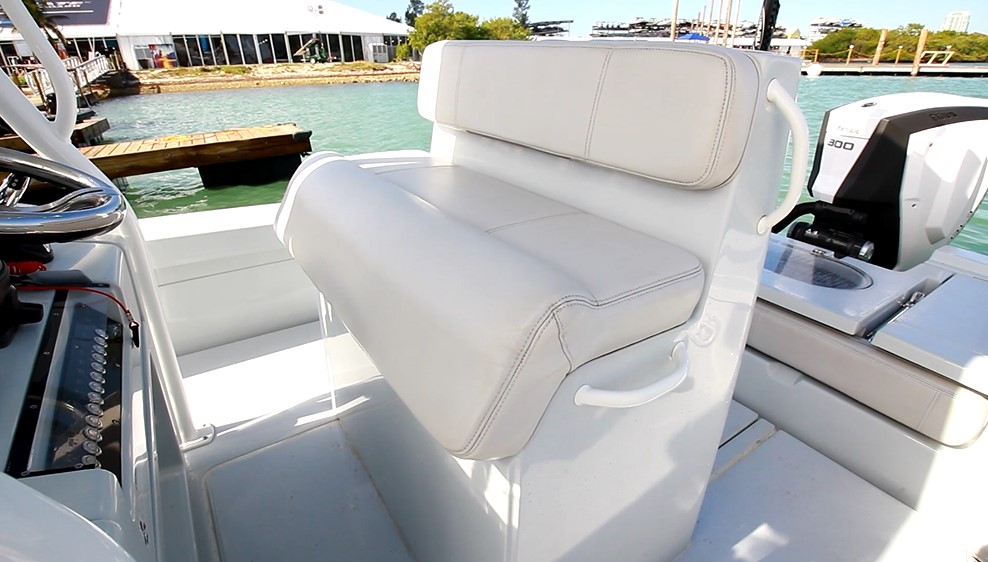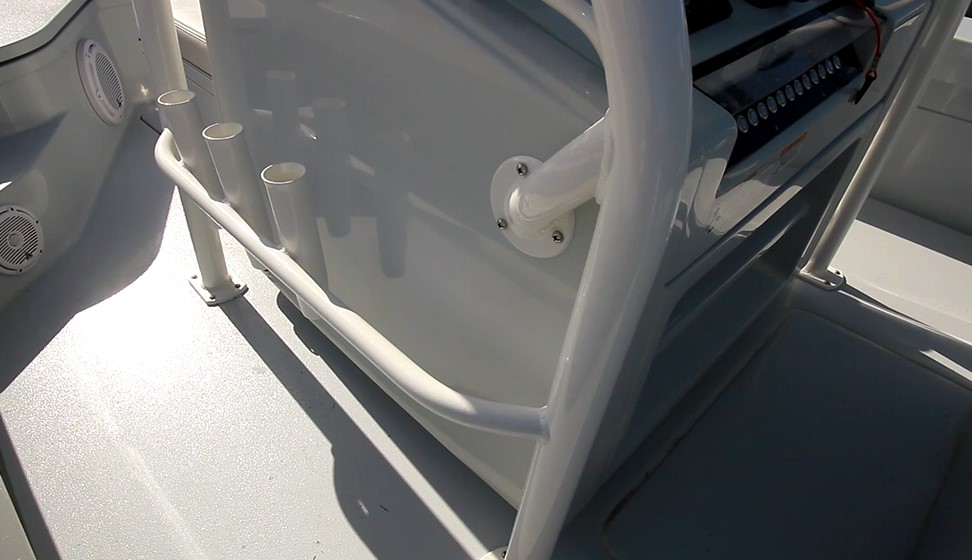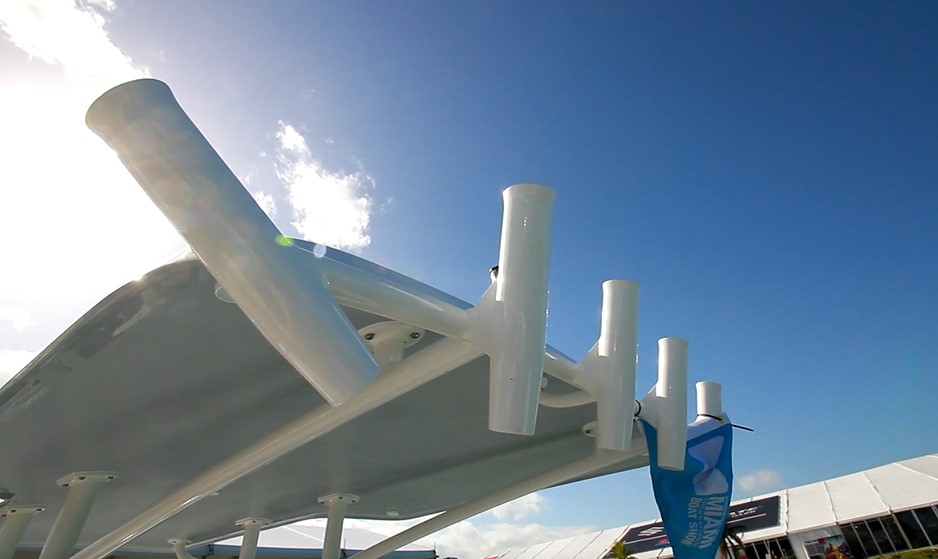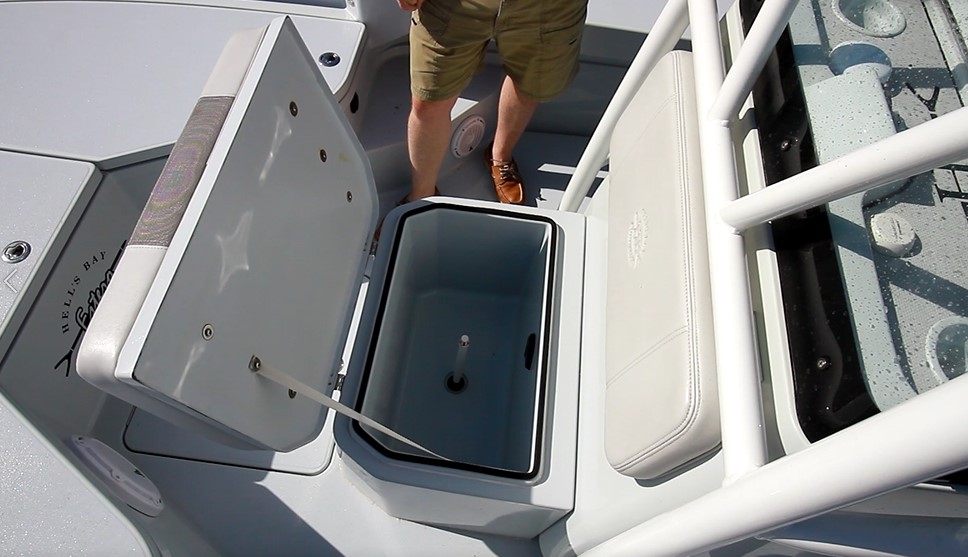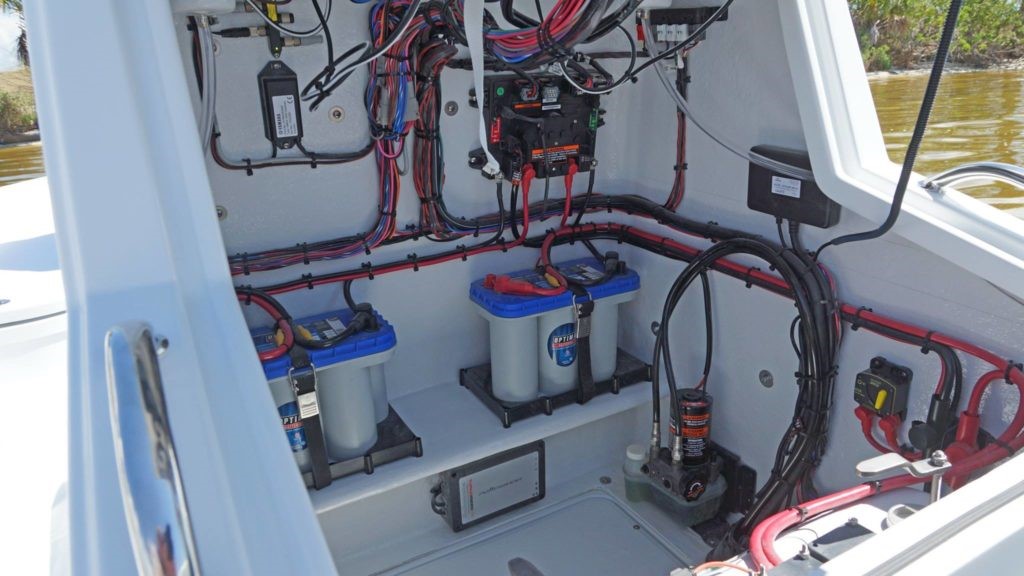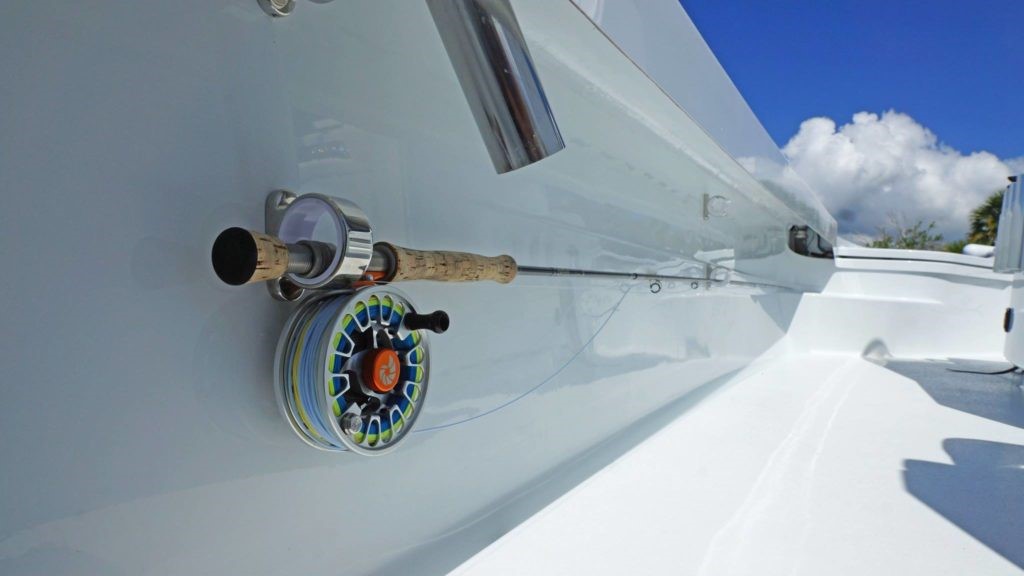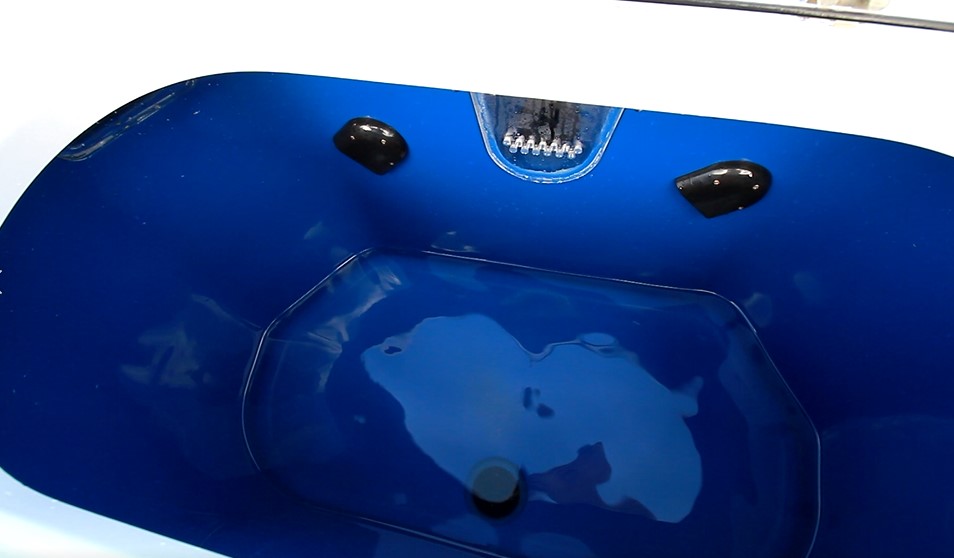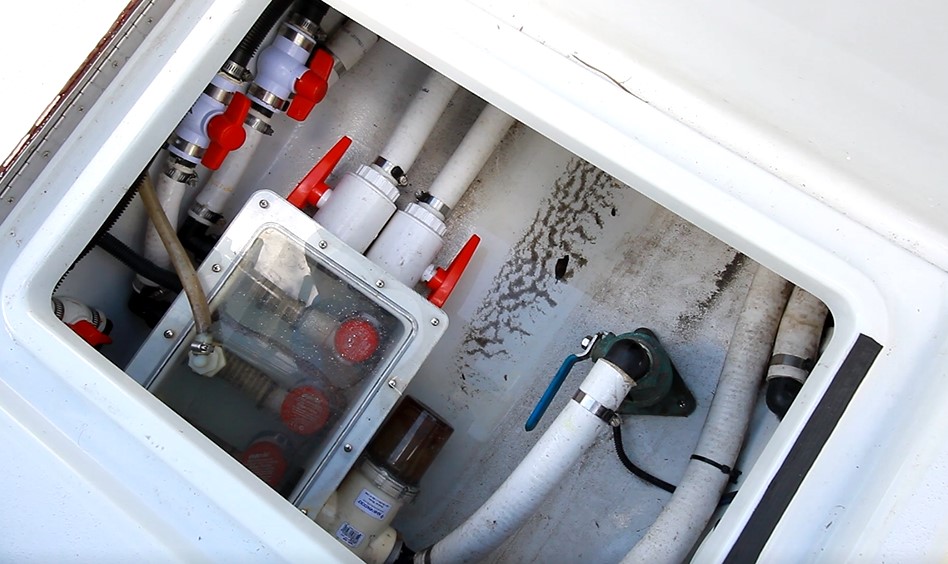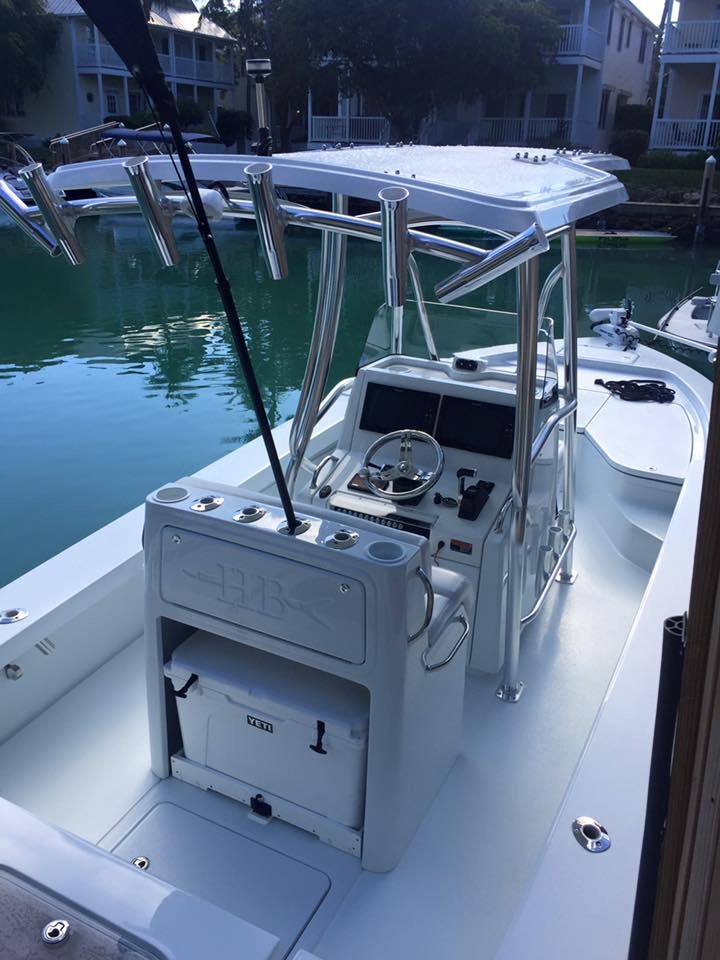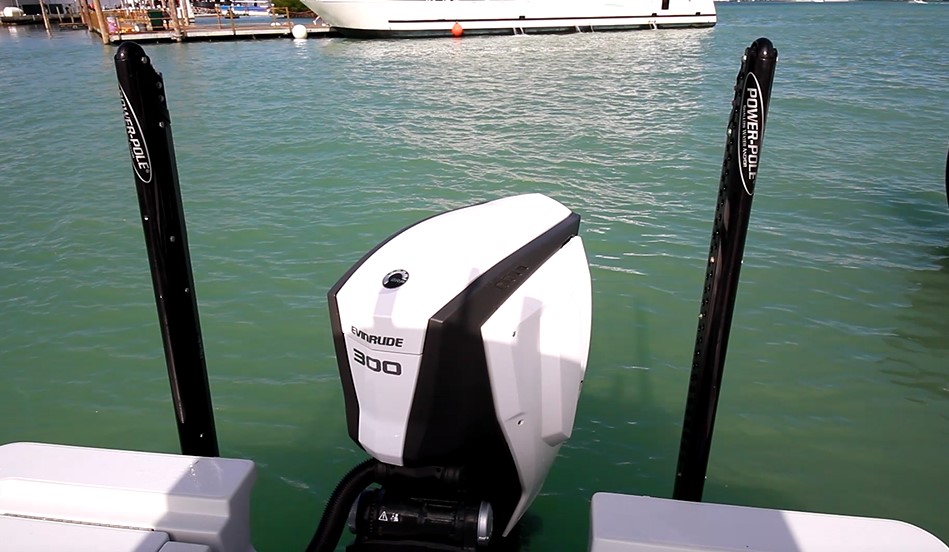Access More Boat Tests
Already have an account? Login
Hell's Bay Boatworks Estero (2019-)
Price
See the price by becoming
a BoatTEST member.
Members Must Log In
Brief Summary
Hell’s Bay Boatworks in Titusville, FL builds skiffs and flats boats for serious anglers. Their Estero™ model, a 24’ (7.32 m) center console, is the largest boat in the lineup. It is designed for coastal and protected water work with what is literally a bullet-proof hull that is both light, strong, and has a shallow draft. The company sells factory-direct.
Key Features
- 53-gallon (201 L) baitwell on seachest
- Wired trolling motor
- Built-in 130-gallon (492 L) fishbox with macerator
- All Vinylester resin hull
- Hull covered in Kevlar
Specifications
| Length Overall | 24' 10" (7.57 m) |
|---|---|
| Beam | 8' 6" (2.59 m) |
| Dry Weight | 3,659 lbs. (1,660 kg) |
| Tested Weight | 4,579 lbs. (2,077 kg) |
| Draft | 13" (33 cm) |
| Deadrise/Transom | N/A |
| Max Headroom | N/A |
| Bridge Clearance | N/A |
| Fuel Capacity | 80 gal. (302 L) |
| Total Weight | 4,579 lbs. (2,077 kg) |
Engine Options
| Tested Engine | |
|---|---|
| Std. Power |
Evinrude E-TEC G2 300-hp |
| Opt. Power |
N/A |
Mission
The Hell’s Bay Boatworks Estero™ is designed for flats, bay, and near-coastal fishing for serious anglers who are not looking for expensive amenities and family-friendly features. This boat is a no compromise fishing boat for specific shallow water operations.
Major Features
• Shallow draft
• Conventional and fly rod storage
• Dual-axle aluminum trailer
• Kevlar in the hull
• Battery management system
The Back Story
Hell’s Bay Boatworks was formed by renowned Florida fishing guide, Flip Pallot, along with boat designer Chris Morejohn with one goal in mind – to build the best flats fishing boat. Merely improving conventional designs was not good enough. They wanted to make sweeping changes in design and construction that would revolutionize the shallow water fishing industry.
Today, Hell’s Bay Boatworks is still led by a team of dedicated fishermen, outdoorsmen, and adventurers. This team is guided by Captain Chris Peterson and his wife Wendi Peterson. The company is small compared to some other skiff builders, but what it does not have in numbers it makes up for in innovation, fishing expertise, and passion for building a quality product for a reasonable price.
The reason the price is reasonable is because the company sells factory direct, thus reducing selling costs, which can be substantial on large boats. Buying factory direct also permits a degree of personalization often not available in boats bought through dealerships.
Overview
After two years of development, Hell’s Bay Boatworks has produced its flagship bay boat designed for hardcore fishermen and serious weekend anglers. The Estero™ is the first Hell’s Bay boat designed around inshore and near-shore fishing. She combines the classic features of a Hell’s Bay skiff with the capability to handle the rougher waters found along the coast. At a full 24’10” (7.57 m) in length with an 8′6” (2.59 m) beam, this boat is rated for up to a 400-hp engine. While stable and fast, the Estero™ only draws 13” to 15” (33 cm to 38 cm) of water on the flats.
Design
Hard chines further aft are okay for flatter water, but deflecting any kind of seas required a more aggressive approach on the bow, so upper spray rails had some priority in the overall design.
Construction
The Estero is built using 100% Vinylester resin, vacuum infused over Core Cell™ PVC foam and Kevlar throughout the entire hull structure, according to the builder. This is costly construction and Hell’s Bay Boatworks is the only builder in class that we know of that has an all vinylester and Kevlar hull laminate.
The vinylester resin is impervious to water migration, and virtually all builders use it as a skin coat, to eliminate hull blistering. However, few builders in any class or size use it throughout the laminate because it is more expensive. Vinylester resin is also stronger and adheres to other materials better than polyester resin, according to the literature.
Kevlar, as most people know is used on bullet-proof vests, and is used by some builders in the keels to provide protection in case of hard groundings, and in the stern quarters to reduce the chance of stress cracking in the gelcoat. Hell’s Bay Boatworks uses it in the entire hull because it is light weight, far stronger than several layers of glass fiber, and is more puncture resistant.
Single Hose Clams. During our inspection, we noticed that single clamps were used on the hoses connected to the boat’s through-hull fittings and seachest. While this construction meets ABYC standards, we prefer to see double clamps on all hoses below the waterline that handle seawater.
The Engine
Hell’s Bay Boatworks offers Evinrude 300 horsepower engines as standard equipment. Our test boat was powered with an Evinrude E-TEC G2 300-hp outboard with a 15” x 22” 4-blad ss prop.
Advantages of Evinrude E-TEC G2s on a Skiff—
1) Greater Low-End Torque. The 2-stroke Evinrude E-TEC G2s have the advantage of having greater low-end torque, so gets on plane faster with less bow rise than 4-stroke engines.
2) 81-Degree Tilt. Evinrude’s built-in power steering mechanism eliminates the need for an external SeaStar steering arm in the front of the engine, allowing the E-TEC G2 to tilt 81-degrees, more than any other engine on the market. This is important with a skiff which has a low freeboard transom to get the lower unit completely out of the water when not in use.
3) No Oil Change Hassel. Evinrude as an internal 2 gallon (8 L) oil tank and not an external one that would take up valuable space in the boat. There is enough oil in the tank for 50 to 75 hours of use, a season of operation for most people – and, of course, no oil changes are needed and no new oil filters.
4) Lower Total Price. When the Evinrude E-TEC G2 engines with its standard power steering and iTrim (automatic trimming) are compared to other engines, which require an up charge for power steering, it is less costly to buy.
5) Lower Operating Costs. Perhaps most importantly, the Evinrude E-TEC G2 300 is the most economical outboard engine on the market to operate. There is no scheduled dealer maintenance for 5 years or 500 miles, whichever comes first, and no oil changes and new oil filters to buy every year or 100 hours.
6) Longest Anti-Corrosion Warranty. Because Evinrude coats all of its lower unit parts and any metal part that comes in contact with raw water, with titanium oxide, and because all of its metal fasteners are stainless steel, the company is able to offer a 5-year anti-corrosion warranty, which is the longest in the industry.
Engine Specs. Evinrude used computational fluid dynamics to design a big block and heads configured to maximize combustion, reduce fuel consumption, and effectively lower emissions. The 300 horsepower is from a normally aspirated 3.4 L, 74-degree V6 that will rev to 6000 rpm and turn a reduction gear case of 1.85:1. The bore and stroke of the cylinders measure 3.85” by 3.00’’.
Stratified Combustion. At idle and low RPM, the patented Evinrude injector sprays a light mist of fuel in the upper combustion chamber to minimize fuel burn. At WOT, Evinrude calls this the homogeneous mode, where the cylinders fill with gas and air to maximize power. This two-mode combustion is called “stratified combustion.” It results in lower emissions, and better fuel efficiency – and has been documented by rigorous testing procedures that are standardized by all outboard engine makers.
A special electronic oil-injection system meters oil to lubricate the engine's internal components. The resulting combustion is fired by BRP’s Fast Rise Inducted Ignition system that produces a higher energy, longer duration spark for improved fuel burn.
The maintenance free, magneto-style charging system produces 133-amps with an allotment of 50-amps being directed to the boat's house battery and electrical components. This unit produces more available charging power than is available in any 4-stroke engine in class.
The Evinrude E-TEC G2 300-hp outboard is also equipped with a very handy winterizing engine-fogging feature that occurs at the touch of a button, safeguarding motor storage for next season – and eliminating a costly trip to the dealer for winterization.
Performance
The Hell’s Bay Boatworks Estero has a LOA of 24’10” (7.57 m), a beam of 8’6” (2.59 m), and a draft of 13” (.33 m). With an empty weight of 3,659 lbs. (1,660 kg), full fuel of 80 gallons (302 L), plus two people and test gear onboard, there was an estimated test weight of 4,579 lbs. (2,077 kg).
Timing at this year’s Miami boat show prevented us from personally testing the performance of this boat, but the Evinrude techs certainly have - we thank them for these numbers.
With a single Evinrude E-TEC G2 300-hp gas outboard turning a 15” x 22” 4-bladed prop, the Estero reached a top speed of 55.6 mph at 5600 rpm. The wind was blowing 10 knots, kicking up a heavy chop.
When backing off to 3000 rpm and 27.5 mph, the best fuel economy, with a burn rate of 7.05 GPH and a range of 289 statute miles was found, all while still holding back a 10-percent reserve of the boat’s 80 gallon (302 L) total fuel capacity.
Acceleration
Time to plane: 4.9 seconds
Boat Inspection
The Bow
The forward casting deck is 6’6” fore and aft x 6’6” wide (1.98 m x 1.98 m) (and 4’7”/1.39 m in the middle). There are five 6” (.15 m) pull-up cleats, two on each side, with another one centered on the bow.
The anchor locker has a twist and lock latch. We usually find keepers for a Danforth-style anchor in the anchor locker for center console boats, but the absence on them does not diminish the value of the locker which is large. Note the channels in the deck at the hatch for rode when at anchor.
Forward, the freeboard is 32” (81.28 cm) while aft it slopes down to 19” (48.26 cm).
There is a generous 11” (27.94 cm) caprail around the boat and 14” (35.56 cm) of sidedeck clearance around the console. The cockpit depth is 20” (50.8 cm) forward.
To the sides of the foredeck area are steps that lead up to the casting deck.
The port and starboard lockers have rod storage. The center locker has three Optima batteries for the trolling motor.
The Helm
The helm console has dual 12” nav screens.
The helm includes two Raymarine 12” (30.47 cm) touchscreens and a throttle on the right with trim tabs in front of the throttle. The ignition with lanyard is just to the right of the wheel. To the left of the wheel is the Evinrude engine display and the JL audio system. The stainless steel wheel has a tilt adjustment and a speed knob.
Accessory buttons are below the wheel with a small plexi cover. Below the accessory switches are angled footrests at two levels.
Three more rod holders are built into each side of the base of the hardtop frame.
Sidedecks
The gunwales have two rod holders per side. There are two stereo speakers aft, totaling six in all. There is a deck drain on the forward end of the sidedeck, and another set of scuppers aft.
The Stern
The cockpit depth aft is 17” (43.18 cm.). This is a bit on the low side, causing us to want to use this boat primarily in protected water and coastal water on pleasant days. As we said, this is an angler’s boat.
For additional seating, there are cushions and a bolster that swings up over the aft casting deck and livewell. Under the aft casting deck is more storage.
There are four rod holders with drains flanked by cup holders on the back of helm seat/leaning post. Below is a 105 quart (99 L) Yeti cooler on a slider.
Equipment (Included)
• Bennett trim tabs
• Battery charger
• Pumps with seachest for aft livewell
• Aft cushions and backrest
Optional Equipment to Consider
• Hardtop ($9,500)
• Glovebox ($1,200)
• Second helm hardtop ($25,000)
• Hardware powder coat package ($900)
• JL audio system ($3,900)
• Atlas jackplate ($1,700)
• Fresh water washdown ($850)
• Raw water washdown ($500)
• Cooler slide ($500)
• Swim platform with ladder ($1,300)
• 10’ Power-Pole ($2,500)
• 36v Minn Kota Riptide Ulterra trolling motor ($3,725)
• 3 bank charger for TM batteries ($530)
• Forward console seat plumbed 30-gallon (114 L) pitchwell ($2,600)
• Bolsters on gunnels ($2,520)
• Forward seatback inserts ($1,240)
• Spreader lights ($400)
• Livorsi underwater lights ($725)
• Stainless rubrail ($844)
Price
$110,000 with engine and trailer.
Observations
We understand the legacy at Hell’s Bay Boatworks and applaud their laser focus to fishing clientele. They’ll include options, like cushions and bolsters, to broaden the boats’ appeal, but that is not what they are focused on – fishing is.
The Estero is lightweight because of the Kevlar, PVC coring, and vacuum resin infusion to minimize resin in the laminate and maximize strength, which makes the boat faster and more fuel efficient – and draw less water. With the large casting decks and fishing amenities, we think it makes an excellent bay and flats boat, with near coastal capabilities.
From a price and value standpoint, because Hell’s Bay Boatworks is factory direct, it can offer a greater value for money spent simply because selling costs are reduced.

